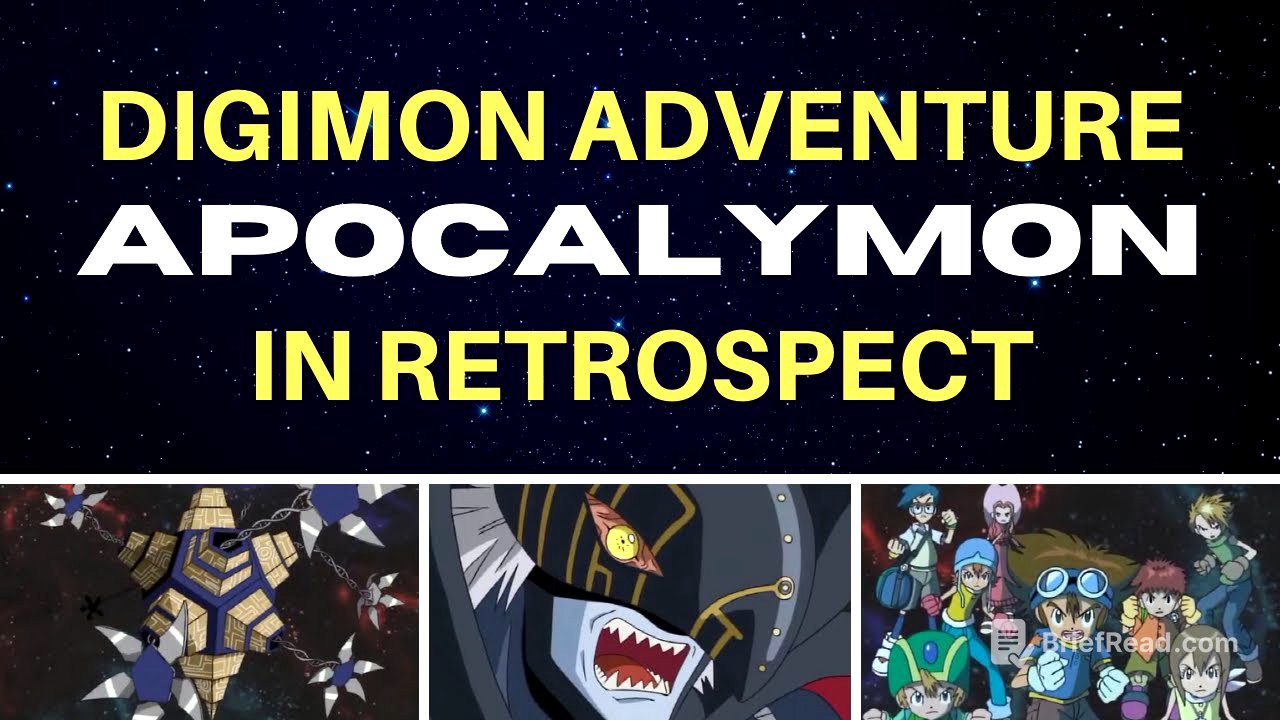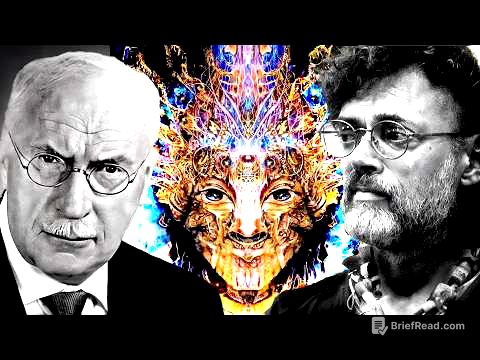TLDR;
This video analyzes episodes 53 and 54 of Digimon Adventure, focusing on the character of Apocalymon and the themes of chaos, order, and heroism. It explores Apocalymon's origins, motivations, and design, drawing parallels to religious and philosophical concepts. The video also examines the role of the Chosen Children, arguing that they represent chaos disrupting the established order.
- Apocalymon embodies resentment and a twisted form of victimhood.
- The Chosen Children are agents of chaos, challenging the established order.
- The series undermines traditional heroic archetypes, highlighting humility and weakness as strengths.
Introduction and Context from Episode 52 [0:46]
The video starts by referencing a scene from episode 52 featuring Gennai and Centaurmon discussing a "firewall" protecting the digital world. This firewall has been breached, leading to a new crisis. The chosen children are drawn into a new realm, where they learn from Gennai that they are at the source of all evil. This evil, Apocalymon, was previously locked away by another group of chosen children. The speaker critiques the introduction of this previous group, suggesting an alternative concept based on Koshiro's earlier theory about digital copies of the children.
The Snapshot Theory [4:51]
The speaker proposes an alternative theory involving "snapshots," a computing term for data backups. The idea is that the chosen children in the digital world are digital copies based on real-world children, who are unaware of their digital counterparts' adventures. This concept introduces existential themes and the possibility of past versions of the children existing. It also provides a potential explanation for Nanomon's cloning of Sora.
Apocalymon: The Embodiment of Darkness [7:45]
Apocalymon is described as the darkness itself, warping space-time and threatening both the digital and real worlds. The speaker discusses the English dub's portrayal of Apocalymon, contrasting it with the original Japanese version. The Japanese voice actor, Chikao Otsuka, also voiced Piedmon, imbuing both characters with a sense of tragedy and maturity. Apocalymon's physical form is an ominous decahedron with claw-like extensions resembling DNA strands, representing rejected digimon. The decahedron's structure resembles a virus, and a humanoid torso resembling Devimon protrudes from it, connected to a life support system.
Apocalymon's Design and Philosophical Underpinnings [13:11]
The speaker addresses a comment suggesting Apocalymon represents the Y2K problem or junk data, but argues that he symbolizes something deeper. Apocalymon's design is linked to depictions of Satan in Dante's Inferno, and his collective speech patterns reference the demonic host Legion from the Hebrew Bible. He embodies all the digimon thwarted during evolution. Koushiro notes that Apocalymon defies digimon classification. The decahedron form represents order arising from chaos, mirroring the children's arrival on File Island.
Chaos, Order, and the Chosen Children [18:08]
The video challenges the traditional view of chaos as evil and order as good, arguing that the Chosen Children are the true agents of chaos in the story. They disrupt the established order created by the Dark Masters, such as Mugendramon's city and Spiral Mountain. The Dark Masters' efforts to create order are seen as a rebellion against the god-like Chosen Children. The Chosen Children are not special heroes but ordinary people thrust into a conflict. Taichi's repeated humbling undermines the heroic archetype, highlighting the strength found in humility and weakness.
Apocalymon's Resentment and Defeat [21:51]
Apocalymon is portrayed as a victim, claiming to embody the resentment of digimon who disappeared during evolution. This is linked to his satanic origins, echoing the biblical depiction of those in hell bearing witness to those in heaven. Apocalymon's self-inflicted wounds and claims of injustice are seen as a lie, a manipulation to justify his evil deeds. He is an antichrist, a mockery of true suffering, embodying the philosophical concept of "resentment." He blames the Chosen Children for his state, ironically regenerating from his wounds.
The Final Battle and the Power of Friendship [25:45]
The children are reduced to data particles, entering a limbo-like state where they reaffirm their bonds. The destroyed crests reappear, emblazoned on the children's bodies, symbolizing their growth beyond the need for material objects. Yamato explains that the crests activate based on both individual attributes and how others act upon the bearers. The episode concludes with a montage of digimon evolutions, leading to the final battle.
Conclusion: The End of the Adventure [30:42]
The final battle sees the perfect-level digimon paving the way for War Greymon and Metal Garurumon to defeat Apocalymon. In his dying breath, Apocalymon detonates, but the digivices form a cube to contain the explosion, saving both worlds. The digital world disappears from the real world sky, bringing the adventure to a bittersweet conclusion. The eight digivices forming the cube may be the reason why eight children were required to save the digital world in the first place.









